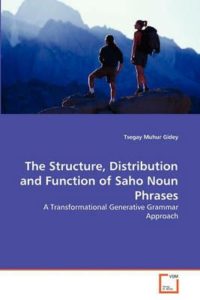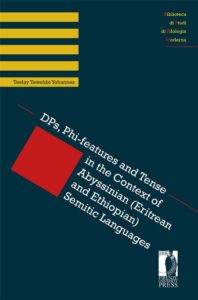Grammatical notes
Sur la langue Saho [On the Saho language] (1843)
by Antoine D’Abbadie
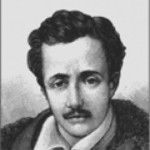
 From “Lettres à M. Jules Mohl: sur la langue saho” [Letters to Mr. Jules Mohl: about the Saho language], Journal Asiatique, 1843, 4, 2: 108-18.
From “Lettres à M. Jules Mohl: sur la langue saho” [Letters to Mr. Jules Mohl: about the Saho language], Journal Asiatique, 1843, 4, 2: 108-18.
The French geographer Antoine d’Abbadie wrote the first brief Saho grammatical sketch (in French). In the article D’Abbadie also includes a list of 15 Saho proverbs with Latin translation.
Source: http://visualiseur.bnf.fr/ark:/12148/bpt6k93142r
Ueber die Saho-Sprache in Aethiopien [On the Saho language in Ethiopia] (1844)
by Heinrich A. Ewald
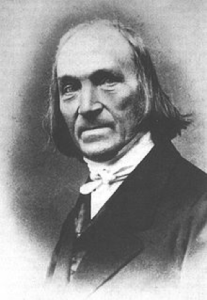
 From Zeitschrift für die Kunde des Morgenlandes, 1844, V: 410-24.
From Zeitschrift für die Kunde des Morgenlandes, 1844, V: 410-24.
Heinrich A. Ewald (1803 – 1875) was a German orientalist and theologian. His article about the Saho language is also based on the one written by Antoine D’Abbadie (see above).
Source: https://archive.org/details/zeitschriftfrd05gtuoft
Die Sahosprache [The Saho language] (1878)
by Leo Reinisch
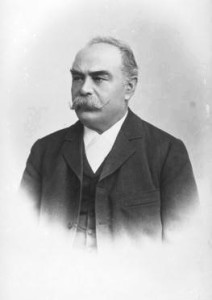
 From Zeitschrift der Deutschen Morgenländischen Gesellschaft, 1878, 32: 415-464.
From Zeitschrift der Deutschen Morgenländischen Gesellschaft, 1878, 32: 415-464.
Leo Reinisch, wrote this first very important article (in German) on the Saho language in 1878. It contains phonological notes and remarks about numerals, pronouns, verbs, nouns, adjectives, postpositions and conjunctions. At the end of the article there is a Saho text translated into German and with several text notes.
Source:https://archive.org/stream/zeitschriftderd85gesegoog#page/n493/mode/2up/search/die+sahosprache
Die Sprache der Irob-Saho in Abessinien [The language of the Irob-Saho in Abyssinia] (1878)
by Leo Reinisch
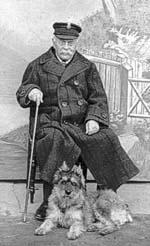
 From Sitzungsberichte der phil.-hist. Classe der kais. Akademie der Wissenschaften 1878, 90.
From Sitzungsberichte der phil.-hist. Classe der kais. Akademie der Wissenschaften 1878, 90.
A very important article on the grammar of the Irob variant of the Saho language.
Source: https://archive.org/details/diesprachederiro00reinuoft
Lautlehre der Saho-Sprache in Nordabessinien [Phonology of the Saho language in North Abyssinia] (1909)
by Alfred Jahn
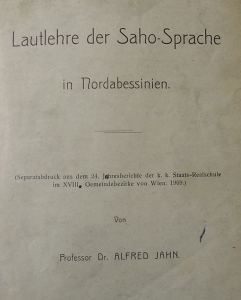
 From Vierundzwanzigster Jahresbericht der K.K. Staats-Realschule im XVIII, 1909, 1-38.
From Vierundzwanzigster Jahresbericht der K.K. Staats-Realschule im XVIII, 1909, 1-38.
Schizzo del dialetto Saho dell’Alta Assaorta in Eritrea. Note grammaticali [Sketch of the Saho dialect of the High Assaorta in Eritrea. Grammatical Notes](1913)
by Carlo Conti Rossini
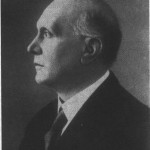
 This is the first part of the article “Schizzo del dialetto saho dell’alta Assaorta in Eritrea” / nota di Carlo Conti Rossini. – Roma : Tip. della R. Accademia dei Lincei, 1913. (From: Rendiconti della Reale Accademia dei Lincei, V. XXII, Fasc. 5, Seduta del 18 maggio 1913). The second part is available here.
This is the first part of the article “Schizzo del dialetto saho dell’alta Assaorta in Eritrea” / nota di Carlo Conti Rossini. – Roma : Tip. della R. Accademia dei Lincei, 1913. (From: Rendiconti della Reale Accademia dei Lincei, V. XXII, Fasc. 5, Seduta del 18 maggio 1913). The second part is available here.
The article was published as a booklet in 1915.
Source: https://archive.org/details/rosettaproject_ssy_detail-3
Notes on the structure of Saho (1952)
by William Welmers
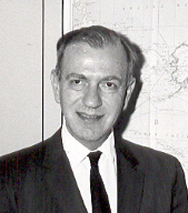
 From Word, 8 (1952): 145-62 and 236-51.
From Word, 8 (1952): 145-62 and 236-51.
Studien zur Sprache der Irob [Study about the language of Irob] (1953)
by Herma Plazikowsky and Ewald Wagner
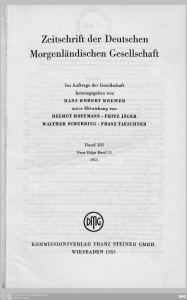
 From Zeitschrift der Deutschen Morgenländischen Gesellschaft, CIII (1953): 278-93.
From Zeitschrift der Deutschen Morgenländischen Gesellschaft, CIII (1953): 278-93.
Saho grammar (no date – 196?)
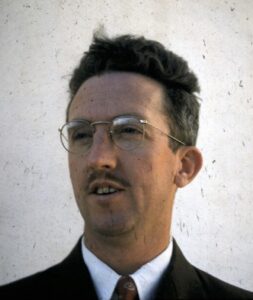 by Francis E. Mahaffy
by Francis E. Mahaffy
 Unpublished grammar notes on Saho by Francis E. Mahaffy, made during his permanence in Eritrea (1954-1968). For the Saho transcription used by Mahaffy see: http://www.sahoarchive.org/wp-content/uploads/2014/08/MAH-EriS-EthS_IPA.jpg
Unpublished grammar notes on Saho by Francis E. Mahaffy, made during his permanence in Eritrea (1954-1968). For the Saho transcription used by Mahaffy see: http://www.sahoarchive.org/wp-content/uploads/2014/08/MAH-EriS-EthS_IPA.jpg
 Some word order principles of Saho-Afar (1990)
Some word order principles of Saho-Afar (1990)
by Marcello Lamberti
From Rassegna di Studi Etiopici, XXXIV (1990): 127-68.
The text is published with the editor’s permission.
Dialectologie de l’ ͨAfar-Saho [Dialectology of the ͨAfar-Saho] (1994)
by Didier Morin

 From Gideon Goldenberg and Shlomo Raz (eds.) (1994) Semitic and Cushitic Studies. Wiesbaden: Harrassowitz. Pp. 252-66.
From Gideon Goldenberg and Shlomo Raz (eds.) (1994) Semitic and Cushitic Studies. Wiesbaden: Harrassowitz. Pp. 252-66.
The text is published with the author’s permission.
“Des paroles douce comme la soie”. Introduction aux contes dans l’aire couchitique (bedja, afar, saho, somali) [“Words sweet like silk.” Introduction to tales in the Cushitic area (Beja, Afar, Saho, Somali) (1995)
by Didier Morin
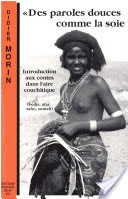
 Didier Morin (1995) “Des paroles douce comme la soie”. Introduction aux contes dans l’aire couchitique (bedja, afar, saho, somali). Louvain-Paris: Peeters.
Didier Morin (1995) “Des paroles douce comme la soie”. Introduction aux contes dans l’aire couchitique (bedja, afar, saho, somali). Louvain-Paris: Peeters.
The part of the book available here is the chapter 2, titled “Présentation de l’afar et du saho” [“Presentation of the Afar and the Saho] (pp. 63-127). It is a grammatical sketch of the Afar and Saho languages, divided in five sections: Dialectologie [Dialectology, with phonological and morphological notes], Morpho-syntaxe [Morpho-syntax], Système nominal [Nominal system], Système verbal [Verbal system] and Syntaxe [Syntax].
The text is published with the author’s permission.
Progressivité, simultanéité, antériorité en Afar-Saho [Progressivity, simultaneity, anteriority in Afar-Saho] (2003)
by Didier Morin
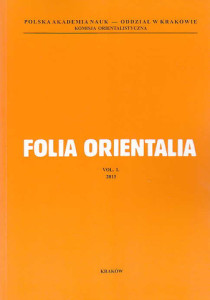
 From Folia Orientalia, 2003, 39: 137-49.
From Folia Orientalia, 2003, 39: 137-49.
The text is published with the author’s permission.
A Sketch of Saho Grammar (2005)
by Giorgio Banti and Moreno Vergari

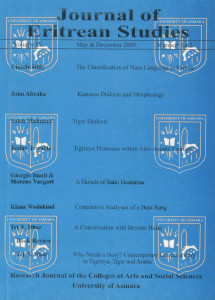 From Journal of Eritrean Studies, Vol. IV, Number 1&2, May-December 2005, pp. 100-31 (pdf of the ms.)
From Journal of Eritrean Studies, Vol. IV, Number 1&2, May-December 2005, pp. 100-31 (pdf of the ms.)
Source: https://www.academia.edu/758286/A_sketch_of_Saho_grammar
Dikshineeri amneefecituk Saaho labcad. Gerho cibra kin Kalimaat Caalamadde [Practise Saho while using the dictionary. An amazing voyage in the World of Words] (2005)
by Moreno Vergari

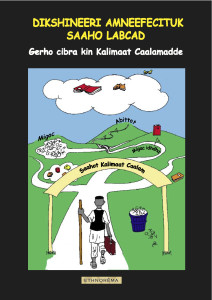 Asmara: Ethnorêma and Sabur Printing Services (2005).
Asmara: Ethnorêma and Sabur Printing Services (2005).
A pedagogical Saho grammar for students and teachers of the Saho elementary schools. Written by Moreno Vergari, translated into Saho by Ahmedsaad Mohammed Omer. Drawings by Paola Giorgi. Collaborators: Roberta Vergari, Aaron and Anna Hornkohl.
ͨAsaurta (2006)
by Didier Morin
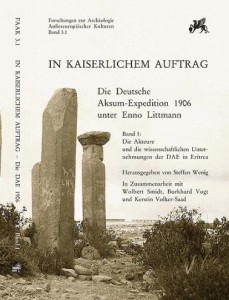
 From Steffen Wenig (ed.) (2006) In Kaiserlichem Auftrag – Die Deutsche Aksum-Expedition 1906 unter Enno Littmann. Band 1: Die Akteure und die wissenschaftlichen Unternehmungen der DAE in Eritrea. Aichwald: Linden Soft.
From Steffen Wenig (ed.) (2006) In Kaiserlichem Auftrag – Die Deutsche Aksum-Expedition 1906 unter Enno Littmann. Band 1: Die Akteure und die wissenschaftlichen Unternehmungen der DAE in Eritrea. Aichwald: Linden Soft.
The text is published with the author’s permission.
How to express ‘adjectives’ in Saho (2008)
by Moreno Vergari

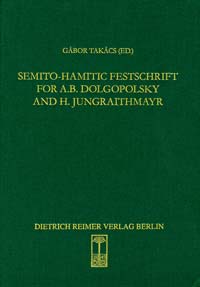 Published in: TAKÁCS, Gábor (ed.) Semitico-Hamitic (Afro-Asiatic) Festschrift for A.B. Dogopolsky and H. Jungraithmayr , Berlin, Dietrich Reimer Verlag, 2008:317-346).
Published in: TAKÁCS, Gábor (ed.) Semitico-Hamitic (Afro-Asiatic) Festschrift for A.B. Dogopolsky and H. Jungraithmayr , Berlin, Dietrich Reimer Verlag, 2008:317-346).
Afar and Saho do not have a specific adjectival category. This article classifies the different ways in which “adjectives” are expressed in Saho. Adjectival words are represented mainly by stative verbs or by phrases that have stative verbs as their heads.
Source: https://www.academia.edu/758490/How_to_Express_Adjectives_in_Saho
Italianismi lessicali in saho [Lexical Italianisms in Saho] (2008)
by Giorgio Banti and Moreno Vergari

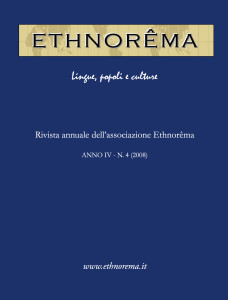 From Ethnorêma, 4 (2008): 67-93.
From Ethnorêma, 4 (2008): 67-93.
After a brief characterization of the Saho language, spoken in Eritrea and some adjoining areas of Tigray, the authors outline a history of the development of literacy in this language from the late XIX century till now. The bulk of this paper consists in the analysis of ca. 300 Italian loanwords collected mainly from (i.) the Saho-English- Italian dictionary published by Vergari & Vergari in 2003, (ii.) Saho school books, (iii.) other supplementary textbooks and the Saho version of the Eritrean Constitution, and (iv.) native speakers of Saho in Eritrea between 2000 and 2007.
Most of these loanwords are nouns, but there are also three verbs and nine interjections. Their integration into Saho phonology and morphology are discussed in § 4 together with some features they share with Italian loanwords in Somali and Tigrinya, as well as with the Eritrean Italian pidgin described by Habte-Mariam Marcos (1976). The main semantic fields these loanwords belong to are: mechanic and building technologies, sports, the army, games, clothing, food and other household-related words.
Source: https://www.academia.edu/758288/Italianismi_lessicali_in_saho
The morphology of Saho (2009)
by Tewodros Kidane
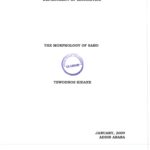
 M.A. thesis submitted to the School of Graduate Studies of Addis Ababa University.
M.A. thesis submitted to the School of Graduate Studies of Addis Ababa University.
Abstract: The general objective of this study is to describe the morphology of Saho language with particular emphasis on the Irob dialect. This general objective includes the following specific objectives. i) Identifying the inflectional morphology of the language ii) Identifying the derivational morphology of the language The study describes the inflectional categories of Saho nouns, adjectives, pronouns and verbs. Nouns are inflected for number and case whereas gender and definiteness are basically indicated via independent words. Some pronouns of the language are derivatives and can inflect for different grammatical categories. Gender in adjectives is marked through vowel lengthening while number is marked by adding different affixes. Adjectives always precede the nouns they modify and should agree in number and gender with the head nouns. Based on the subject agreement affixes they take, Saho verbs are classified in to two classes. Verbs in Saho are inflected for the categories aspect, mood, number and person, whereas tense is marked by the auxiliary verb -in-. This verb has the same verb conjugation as stems of class II. The perfectible form -ine indicates the past tense and its imperfection form -ane indicates the non past tense. In Noncriminals are basically derived from adjectives, verbs and other nouns as an abstract, attentive, and infinitive. In addition to nouns verbs are also derived as causative, passive, reciprocal and auto benefactive by adding different affixes.
Source: http://213.55.95.56/handle/123456789/25686
Saho language (2010)
by Giorgio Banti and Moreno Vergari

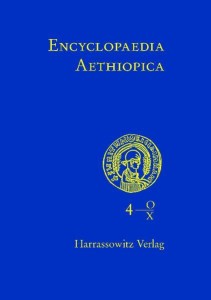 From UHLIG Siegbert (ed.) Encyclopaedia Aethiopica, vol. 4 (2010). Wiesbaden: Harrassowitz; pp. 468b-471a
From UHLIG Siegbert (ed.) Encyclopaedia Aethiopica, vol. 4 (2010). Wiesbaden: Harrassowitz; pp. 468b-471a
The entry ‘Saho language’ of the Encyclopaedia Aethiopica, is a short overview of the Saho language and some of its peculiarities. In the same volume of the Encyplopaedia, there are other two articles about the Saho literature (by Didier Morin) and Saho ethnography (by Abdulkader Saleh Mohammed and Didier Morin).
Source: https://www.academia.edu/758519/Saho_language
ʿAfar-Saho and the position of Cushitic within Hamitosemitic/Afroasiatic (2010)
by Andrzej Zaborski
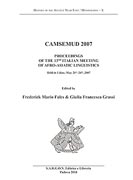
 From Frederick Mario Fales and Giulia Francesca Grassi (Eds.) (2010) CAMSEMUD 2007. Proceedings of the 13th Italian Meeting of Afro-Asiatic Linguistics. Udine, May 21st-24th, 2007. S.A.R.G.O.N. Editrice e Libreria. Pp. 139-147.
From Frederick Mario Fales and Giulia Francesca Grassi (Eds.) (2010) CAMSEMUD 2007. Proceedings of the 13th Italian Meeting of Afro-Asiatic Linguistics. Udine, May 21st-24th, 2007. S.A.R.G.O.N. Editrice e Libreria. Pp. 139-147.
The syntax of determiner phrases in Irob, dialect of Saho language (2010)
by Selamawit Safisa Garedew
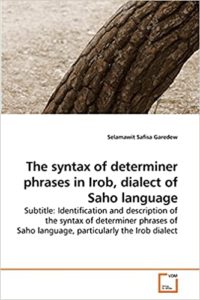
 Subtitle: Identification and description of the syntax of determiner phrases of Saho language, particularly the Irob dialect. VDM Verlag Dr. Müller. The book is not available for the download, but here we publish the original version of the MA thesis (Addis Ababa University).
Subtitle: Identification and description of the syntax of determiner phrases of Saho language, particularly the Irob dialect. VDM Verlag Dr. Müller. The book is not available for the download, but here we publish the original version of the MA thesis (Addis Ababa University).
Abstract of the thesis: The study deals with the syntax of determiner phrases in Saho in light of the Minimalist Program. It tries Lo show the internal constituents and derivations of Saho determiner phrases. It attempts to describe noun inflections such as number gender, singulative and case markers of Saho. The order of constituents within each type of DP and the morphological properties has been examined. All elements of DP precede the head noun. The study identifies that Saho does not have visible affIx to show indefiniteness. However, definiteness is expressed by the definite article / amay / ‘the’. The definite article, demonstratives and adjectives do not agree with the head noun in number, gender and case. The possessorpossessed relationship in this language is not morphologically marked. The study idenlifies four types of relalivi2ations. These are subjecL, direct object, indirect object and possessive relativizations. In all cases, the head noun appears in final position. Finally, the derivations of determiner phrases with vanous internal constituents have been shown. The derivation involves head movement.
The Structure, Distribution and Function of Saho Noun Phrases (2010)
by Tsegay Muhur Gidey
VDM Verlag Dr. Müller. The book is not available for the download.
+
ʿAfar-Saaho dialectology: a methodology (2015)
by Didier Morin
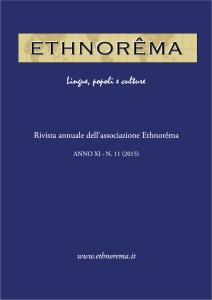
 From Ethnorêma, 11 (2015): 19-54.
From Ethnorêma, 11 (2015): 19-54.
The purpose of this article is to confirm and extend the conclusions based on the corpus already published by this author[1]. Starting with a text in Southern ‘Afar[2] and its translation in Northern and Southern Saaho[3], followed by four folk-tales in Northern and Southern Saaho, this paper identifies a bundle of isoglosses characterizing a dialectal chain[4] whose components, as far as syntax is concerned, are isomorphic. The unpublished corpus shows differences (and similarities) with ‘Afar and between the two mentioned Saaho varieties. Sixteen isoglosses are proposed.
[1] MORIN, D. (1994) “Dialectologie de l’afar-saho”, in G. GOLDENBERG and Shlomo RAZ (eds.) Semitic and Cushitic Studies, Wiesbaden: Harrassowitz. Pp. 252-266. MORIN, D. (1995) «Des Paroles douces comme la soie», Introduction aux contes dans l’aire couchitique (bedja, afar, saho, somali), Paris: Peeters, Selaf n° 352. [2]Op. cit. 1995: 278 sq. Hereafter sA stands for Southern ‘Afar, nA for Northern ‘Afar.[3] We will not repeat here the arguments which allowed to recognize two Saaho dialects only (see our Bibliography). We chose here to concentrate on the methodological aspects which justify our approach in ‘Afar-Saaho dialectology. [4] MAHAFFY, F. E. (1952) An Outline on the Phonemics and Morphology of the Afar (Dankali) Language, Senafe: American Evangelical Mission (mimeographed).
Source: https://www.ethnorema.it/wp-content/uploads/11-05-Morin.pdf
Descriptive Grammar of Saaho (2015)
by Esayas Tajebe Desta
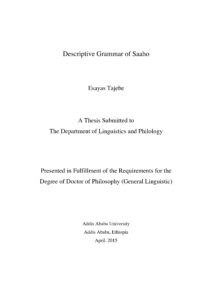 A Thesis Submitted to the Department of Linguistics and Philology – Addis Ababa University
A Thesis Submitted to the Department of Linguistics and Philology – Addis Ababa University
This study is about the grammatical description of Saaho, a language spoken by the Irob people in the Northern part of Ethiopia. The description includes phonology, morphology and syntax.
In the phonology part inventory of phonemes has been made with respect to segmental and supra segmental phonemes. Thus, the language has 22 consonant and 5 vowels segmental phonemes. Gemination of consonants, vowel length and tone constitute meaning distinction and are suprasegmental phonemes. In addition, cooccurence restriction of segments, syllabic structure and morpho phonological processes have been described based on distribution.
In the morphology part description and classification of words has been made by considering universal and language specific features. In the language nouns, verbs and adjective have been considered as major word classes, and adverbs, pronouns, determiners, demonstratives, postpositions, and conjunctions are minor word classes. Some specific components of nominal morphology include sub classes of nouns – proper, common; count and mass. Number: (Plural marking and singulative marking), Gender: masculine and feminine where feminine is the default gender. Formal and semantic gender assignment systems have been described. Tone plays an important role in the morphology of the language. Tone distinguishes gender in nouns. It also serves in case assignment as in nominative, accusative and genitive cases. In addition, nominal derivation involve different processes like affixation, compounding, stem modification, tone alternation, reduplication etc that are employed in forming different sub classes of nouns.
Verbs are grouped into four sub classes- class I both prefixing and suffixing verbs, class II suffixing verbs, class III reduced-verb form and class IV compound verbs. Class I verbs make use of affixation and ablaut process but other classes involve affixation. In addition description of verbal inflection and derivation has been made. The verbs show inflections for subject agreement, aspect (Perfective, imperfective, and progressive) and mood subjunctive, jussive, imperative and infinitive. In the verb derivation: causative, middle, passive, intensive, attenuative, frequentative and inchoative have been described.
Word order the syntax of phrases (NP- Modifier Head N), PP – NP Postposition) and simple sentence has (SOV), and describing different types of clause have been made. In addition, analysis of sentence types as declarative, interrogative, negative has been made
Source: http://etd.aau.edu.et/bitstream/handle/123456789/16303/Esayas%20Tajebe.pdf?sequence=1&isAllowed=y
Aspects of Saho dialectology (2017)
by Giorgio Banti and Moreno Vergari
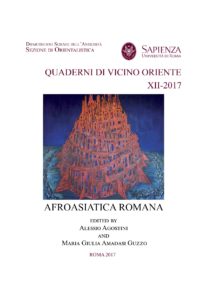
 From Quaderni di Vicino Oriente XII (2017): 65-81
From Quaderni di Vicino Oriente XII (2017): 65-81
Saho is an East Cushitic language spoken in Eritrea and NE Tigray (Ethiopia). It closely resembles Afar. Surveys by the Eritrean Ministry of Education, and fieldwork by Morin, Banti and Vergari make it now possible to provide details about the complex set of isoglosses that characterise its different varieties.
Saho Corpus: Semi-automation of Verb Conjugation in Saho: Verbs Class I (2022)
by Jama Musse Jama
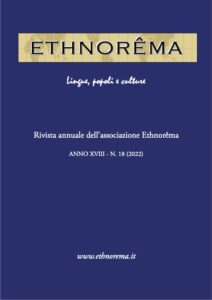 This article develops a semi-automatic morphological analysis module (SaCoFlexor) to generate all inflection forms of the 585 verbs in
This article develops a semi-automatic morphological analysis module (SaCoFlexor) to generate all inflection forms of the 585 verbs in class 1 (C-I) in the Saho language registered in the current Saho Corpus as a basic data dictionary and presents the results. SaCoFlexor correctly identified 98.8% of the items present in the corpus and classified them in 4 major subcategories according to the initial phonemes of the word, with the correct generation of their inflectional morphology forms generating 13,455 new words, tagged, and linked to their respective roots. The output data increased the number of words in the Saho Corpus and improved performances of the computational linguistics functions, including word frequency generation, word identification mechanism, concordance, collocations, and spell checking.
class 1 (C-I) in the Saho language registered in the current Saho Corpus as a basic data dictionary and presents the results. SaCoFlexor correctly identified 98.8% of the items present in the corpus and classified them in 4 major subcategories according to the initial phonemes of the word, with the correct generation of their inflectional morphology forms generating 13,455 new words, tagged, and linked to their respective roots. The output data increased the number of words in the Saho Corpus and improved performances of the computational linguistics functions, including word frequency generation, word identification mechanism, concordance, collocations, and spell checking.
Source: https://www.ethnorema.it/wp-content/uploads/18-07-Jama.pdf

